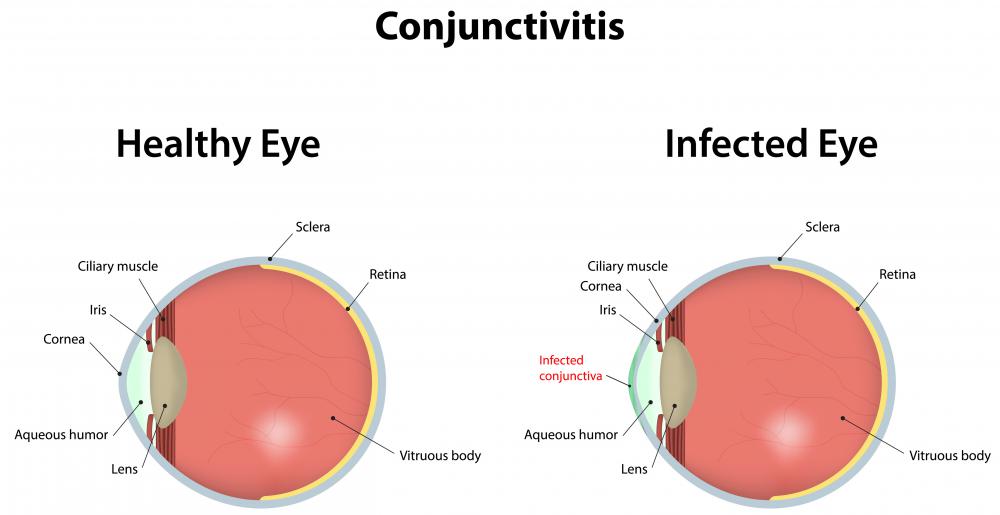At WiseGEEK, we're committed to delivering accurate, trustworthy information. Our expert-authored content is rigorously fact-checked and sourced from credible authorities. Discover how we uphold the highest standards in providing you with reliable knowledge.
What are the Different Types of Allergic Conjunctivitis Treatment?
There are various types of treatment for allergic conjunctivitis, an inflammation of the mucous membrane that covers the whites of the eyes and the inside of the eyelid. The type of allergic conjunctivitis treatment prescribed is related to what particulate the conjunctiva is reacting to and the patient's toleration for certain medications. The most common allergic conjunctivitis treatments include various eye drops, tablets, and allergen avoidance techniques. Some of the medically-based treatments for the condition must be prescribed by a physician or ophthalmologist, but if the condition is not too serious, home care can be effectively managed.
Allergic conjunctivitis usually presents as red, swollen, itchy eyes accompanied by either stringy white discharge or uncomfortable eye dryness. If the allergic reaction presents with the usual associated symptoms of hay fever, the conditions may be treated together. Deemed seasonal allergic conjunctivitis, the first line of treatment consists of antihistamine tablets and topical drops which address the allergic physiological response to seasonal allergens such as pollen. Chromolyn sodium is commonly prescribed in drop form to stop the production of histamine from mast cells located on the eyeball. Antihistamine tablets address the additional production of histamine that may be present systemically.

If the first line of seasonal allergic conjunctivitis treatment does not work effectively, there are more options available. Steroid eye drops are an effective, but sometimes harsh, way to treat the condition. The drops have a significant side effect profile, and they are not recommended for everyday use or for use over an extended period of time. The main steroid drop prescribed is prednisione minims, a relatively gentle corticosteroid that is tolerated well by most allergic conjunctivitis patients and can be taken up to four times daily. Extended use of the drops in allergic conjunctivitis treatment has been linked to glaucoma and cataracts, however, and use needs to be monitored closely by a physician.

If allergic conjunctivitis does not seem to be linked with the onset of hay fever symptoms and can be traced to other allergens in the environment like dust, it is classified as perennial allergic conjunctivitis. The most common perennial allergic conjunctivitis treatment is prophylaxis of a breakout. Ventilating rooms, throwing out old pillows, and staying away from other potentially triggering allergens in the environment is oftentimes recommended by health care professionals. These preventative measures, sometimes taken with some of the same treatment options associated with seasonal allergic conjunctivitis, are usually effective against the condition.
AS FEATURED ON:
AS FEATURED ON:














Discuss this Article
Post your comments